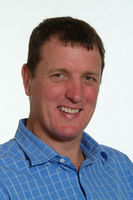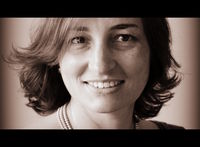South Auckland > Public Hospital Services > Health New Zealand | Te Whatu Ora - Counties Manukau >
Breast Clinic | Counties Manukau
Public Service, Breast, Cancer Network Group
Description
Consultants
-

Dr Magdalena Biggar
Breast Surgeon and Clinical Lead
-

Dr David Moss
Breast Surgeon & Lead Surgeon Breast Screen
-

Dr Sandhya Pillai
Breast Surgeon
-

Mr Garth Poole
Breast Surgeon
-

Dr Stephanie Ulmer
Breast Surgeon
-

Mrs Jenny Wagener
Breast Surgeon
Referral Expectations
Your appointment with the Breast Clinic
We understand you may be feeling worried and anxious about your appointment, but it may be reassuring to know that most breast problems are benign (noncancerous). You are welcome to bring a friend or relative with you. When you arrive please report to the reception desk at Module 9. Every effort will be made to see you as near as possible to your appointment time, however, there are sometimes delays, you will be kept informed if the Clinic is running late.
The clinic nurse will show you into the consulting room, where you will be asked to undress to the waist and put on a clean gown. You will be seen by a Consultant Breast Surgeon or a member of our Specialist Team. The Breast Care Nurses will be in Clinic and are happy to give further information you may require.
The doctor will take a history of your symptoms, including any family history of breast problems and any medication you are taking. The doctor will examine both your breasts and you may require further tests if it is thought necessary. Usually these tests will be carried out on the same day, so please allow enough time (2-3 hours) in case you need any tests.
Tests which may be carried out at the Breast Clinic
You may need one or more of the following:-
- Mammogram (a breast x-ray used to look at changes in the breasts)
- Ultrasound Scan
- Fine needle aspiration cytology or a core biopsy (these are methods to sample the contents of a lump)
For more information about these tests, see 'Procedures/Treatments' below.
Fees and Charges Description
There are no charges for services to public patients if you are lawfully in New Zealand and meet one of the Eligibility Directions specified criteria set by the Ministry of Health. If you do not meet the criteria, you will be declined access to the clinic and redirected to the private sector (in the rare circumstance where this information was not available prior to your clinic appointment, you will be required to pay for the full costs of any medical input you receive).
To check whether you meet the specified eligibility criteria, visit the Ministry of Health website. https://www.health.govt.nz/new-zealand-health-system/eligibility-publicly-funded-health-services
CM Health has an eligibility team who can assist with any patient enquiries. If you have any queries, please email , phone: (09) 276 0060.
Procedures / Treatments
In some cases if a lump or abnormal area is found during the breast examination, a sample of cells will be taken using a 'biopsy device' or a fine needle. The sample is then looked at by a pathologist, under the microscope. You will generally receive the result at your next visit or contact with our service. Sometimes further tests are necessary which may not be able to be done at your first visit. You will be given an appointment for these and also be contacted again by the clinic to receive the results. Your doctor will be informed of the results. Whatever your diagnosis it is still important for you to be aware and visit your own doctor if you notice any further changes.
In some cases if a lump or abnormal area is found during the breast examination, a sample of cells will be taken using a 'biopsy device' or a fine needle. The sample is then looked at by a pathologist, under the microscope. You will generally receive the result at your next visit or contact with our service. Sometimes further tests are necessary which may not be able to be done at your first visit. You will be given an appointment for these and also be contacted again by the clinic to receive the results. Your doctor will be informed of the results. Whatever your diagnosis it is still important for you to be aware and visit your own doctor if you notice any further changes.
In some cases if a lump or abnormal area is found during the breast examination, a sample of cells will be taken using a 'biopsy device' or a fine needle. The sample is then looked at by a pathologist, under the microscope. You will generally receive the result at your next visit or contact with our service.
Sometimes further tests are necessary which may not be able to be done at your first visit. You will be given an appointment for these and also be contacted again by the clinic to receive the results. Your doctor will be informed of the results. Whatever your diagnosis it is still important for you to be aware and visit your own doctor if you notice any further changes.
A mammogram is a special type of x-ray used only for the breast. Mammography can be used either to look for very early breast cancer in women without breast symptoms (screening) or to examine women who do have breast symptoms (diagnostic). If you are having a mammogram because you have found a lump, it is important to remember that most breast lumps are not cancer, but the only way to be certain is to have it tested. What to expect? Tell the radiographer if you are, or think you may be, pregnant. Do not use talcum powder or underarm deodorant on the day of your examination as these can show up on the pictures. If you get severe breast pain connected with your menstrual cycle, it is better to make your appointment for the week after your period. You will need to undress from the waist up and a gown will be provided. To ensure a good film the radiographer (an expert in taking breast x-rays) will ask you to stand in front of the mammography machine. One of your breasts will be positioned between two plastic plates that will flatten the breast slightly. This lasts only a few seconds and cannot do any permanent damage to your breast. The flatter the breast, the better the quality of the picture, making it easier for the radiologist to read. Most women find that this is a bit uncomfortable, but not painful. Generally two x-rays are taken of each breast. It is also useful to compare the results with earlier examinations and you should take any previous mammography results with you. The mammograms are looked at by radiologists who then inform your surgeon. This usually takes less than 1 hour. Sometimes, after a mammogram, you may be asked to have an ultrasound as well if the radiologist wants to find out more about a lump or a dense area of tissue in the breast.
A mammogram is a special type of x-ray used only for the breast. Mammography can be used either to look for very early breast cancer in women without breast symptoms (screening) or to examine women who do have breast symptoms (diagnostic). If you are having a mammogram because you have found a lump, it is important to remember that most breast lumps are not cancer, but the only way to be certain is to have it tested. What to expect? Tell the radiographer if you are, or think you may be, pregnant. Do not use talcum powder or underarm deodorant on the day of your examination as these can show up on the pictures. If you get severe breast pain connected with your menstrual cycle, it is better to make your appointment for the week after your period. You will need to undress from the waist up and a gown will be provided. To ensure a good film the radiographer (an expert in taking breast x-rays) will ask you to stand in front of the mammography machine. One of your breasts will be positioned between two plastic plates that will flatten the breast slightly. This lasts only a few seconds and cannot do any permanent damage to your breast. The flatter the breast, the better the quality of the picture, making it easier for the radiologist to read. Most women find that this is a bit uncomfortable, but not painful. Generally two x-rays are taken of each breast. It is also useful to compare the results with earlier examinations and you should take any previous mammography results with you. The mammograms are looked at by radiologists who then inform your surgeon. This usually takes less than 1 hour. Sometimes, after a mammogram, you may be asked to have an ultrasound as well if the radiologist wants to find out more about a lump or a dense area of tissue in the breast.
A mammogram is a special type of x-ray used only for the breast. Mammography can be used either to look for very early breast cancer in women without breast symptoms (screening) or to examine women who do have breast symptoms (diagnostic). If you are having a mammogram because you have found a lump, it is important to remember that most breast lumps are not cancer, but the only way to be certain is to have it tested.
What to expect?
Tell the radiographer if you are, or think you may be, pregnant. Do not use talcum powder or underarm deodorant on the day of your examination as these can show up on the pictures. If you get severe breast pain connected with your menstrual cycle, it is better to make your appointment for the week after your period.
You will need to undress from the waist up and a gown will be provided. To ensure a good film the radiographer (an expert in taking breast x-rays) will ask you to stand in front of the mammography machine. One of your breasts will be positioned between two plastic plates that will flatten the breast slightly. This lasts only a few seconds and cannot do any permanent damage to your breast. The flatter the breast, the better the quality of the picture, making it easier for the radiologist to read. Most women find that this is a bit uncomfortable, but not painful. Generally two x-rays are taken of each breast. It is also useful to compare the results with earlier examinations and you should take any previous mammography results with you.
The mammograms are looked at by radiologists who then inform your surgeon. This usually takes less than 1 hour.
Sometimes, after a mammogram, you may be asked to have an ultrasound as well if the radiologist wants to find out more about a lump or a dense area of tissue in the breast.
This uses high frequency sound waves to produce an image of the breast. You will be asked to lie on a couch with your arm above your head, some gel will be spread on your breast and the scanning probe will be moved around it. An ultrasound scan is painless and only takes a few minutes to do.
This uses high frequency sound waves to produce an image of the breast. You will be asked to lie on a couch with your arm above your head, some gel will be spread on your breast and the scanning probe will be moved around it. An ultrasound scan is painless and only takes a few minutes to do.
This uses high frequency sound waves to produce an image of the breast. You will be asked to lie on a couch with your arm above your head, some gel will be spread on your breast and the scanning probe will be moved around it. An ultrasound scan is painless and only takes a few minutes to do.
When a breast has been removed (mastectomy) because of cancer or other disease, it is possible in most cases to reconstruct a breast similar to a natural breast. A breast reconstruction can be performed as part of the breast removal operation or can be performed months or years later. There are two methods of breast reconstruction: one involves using an implant; the other uses tissue taken from another part of your body. There may be medical reasons why one of these methods is more suitable for you or, in other cases, you may be given a choice. Implants A silicone sack filled with either silicone gel or saline (salt water) is inserted underneath the chest muscle and skin. Before being inserted, the skin will sometimes need to be stretched to the required breast size. This is done by placing an empty bag where the implant will finally go, and gradually filling it with saline over weeks or months. The bag is then replaced by the implant in an operation that will probably take 2-3 hours under general anaesthesia (you will sleep through it). You will probably stay in hospital for 2-5 days. Flap Reconstruction A skin flap taken from another part of the body such as your back, stomach or buttocks, is used to reconstruct the breast. This is a more complicated operation than having an implant and may last up to 6 hours and require a 5- to 7-day stay in hospital.
When a breast has been removed (mastectomy) because of cancer or other disease, it is possible in most cases to reconstruct a breast similar to a natural breast. A breast reconstruction can be performed as part of the breast removal operation or can be performed months or years later. There are two methods of breast reconstruction: one involves using an implant; the other uses tissue taken from another part of your body. There may be medical reasons why one of these methods is more suitable for you or, in other cases, you may be given a choice. Implants A silicone sack filled with either silicone gel or saline (salt water) is inserted underneath the chest muscle and skin. Before being inserted, the skin will sometimes need to be stretched to the required breast size. This is done by placing an empty bag where the implant will finally go, and gradually filling it with saline over weeks or months. The bag is then replaced by the implant in an operation that will probably take 2-3 hours under general anaesthesia (you will sleep through it). You will probably stay in hospital for 2-5 days. Flap Reconstruction A skin flap taken from another part of the body such as your back, stomach or buttocks, is used to reconstruct the breast. This is a more complicated operation than having an implant and may last up to 6 hours and require a 5- to 7-day stay in hospital.
Region
South Auckland
Website
Contact Details
Manukau SuperClinic™
South Auckland
-
Phone
(09) 277 1660 or FREEPHONE 0800 266 513
Email
Website
Manukau SuperClinic™ has a Call Centre to receive incoming calls related to outpatient services. The Call Centre is open to receive calls between 7:30 AM and 6:00 PM Monday to Friday.
Module 9
901 Great South Road
Manurewa
Auckland
Street Address
Module 9
901 Great South Road
Manurewa
Auckland
Postal Address
Manukau SuperClinic™
PO Box 98743
Manukau City
Manukau 2241
Was this page helpful?
This page was last updated at 2:42PM on March 6, 2024. This information is reviewed and edited by Breast Clinic | Counties Manukau.

